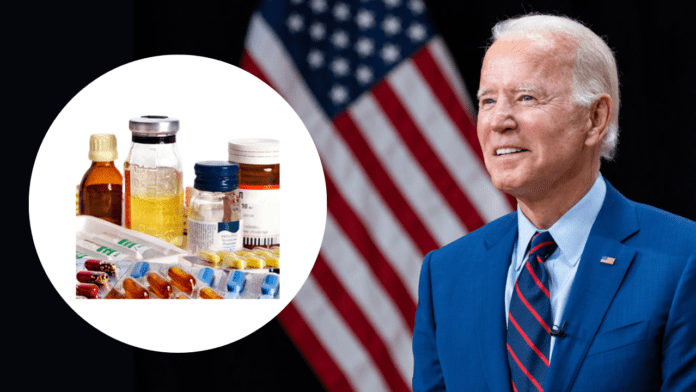| Translate This News In |
|---|
The Biden administration has unveiled its roster of the initial 10 medications that will be subject to price reductions under Medicare. These cuts will be realized through direct negotiations with drug manufacturers.
Individuals enrolled in Medicare who relied on these 10 drugs faced a collective burden of $3.4 billion in out-of-pocket expenses during 2022, according to government records. Medicare itself shouldered a substantially larger cost, reaching a total of approximately $50 billion.
The list includes:
- Blood thinners Eliquis and Xarelto
- Diabetes treatments Jardiance, Januvia, Farxiga, and Fiasp/Novolog insulin
- Enbrel and Stelara, used to address autoimmune conditions like rheumatoid arthritis, psoriasis, and Crohn’s disease
- Imbruvica, a therapeutic agent for blood cancers
Empowered by the Inflation Reduction Act enacted the previous year, the administration is poised to initiate negotiations over the upcoming two years, with finalized prices to be disclosed by September 1, 2024. However, the reduced prices for these drugs will not become effective until 2026.
A lobbying group, The Pharmaceutical Research and Manufacturers of America (PhRMA), criticized the move, asserting that it vests excessive authority in the government, which could compromise innovation and investment critical for the Biden administration’s anti-cancer drive. PhRMA’s CEO, Stephen Ubl, cautioned against the perceived focus on immediate political gains, rather than prioritizing patients’ interests.
Drug manufacturers countered by highlighting the presence of rebates and discounts for many of the drugs on the list. For instance, the government reported that Bristol Myers Squibb’s Eliquis amounted to $16.4 billion in Medicare expenses for the year ending May 2023. However, the company argued that this figure was over three times the actual program spending due to the omission of rebates, discounts, and fees paid to Medicare and Part D plans.
Comparatively, prescription drug prices in the United States significantly surpass those in other regions globally. While other countries have established frameworks for pricing pharmaceuticals, the U.S. government is embarking on this endeavor from the ground up.
Stacie Dusetzina, hailing from Vanderbilt University’s School of Medicine, explained the comprehensive nature of the process, involving extensive discussions with drug companies. These dialogues encompass a wide array of factors, including research and development expenses, manufacturing costs, and federal investments in drug-related research.
In a forward-looking move, the law permits the negotiation of additional prices for 2027 and the ensuing years, ensuring that the ongoing commitment to affordable medication remains steadfast.


















